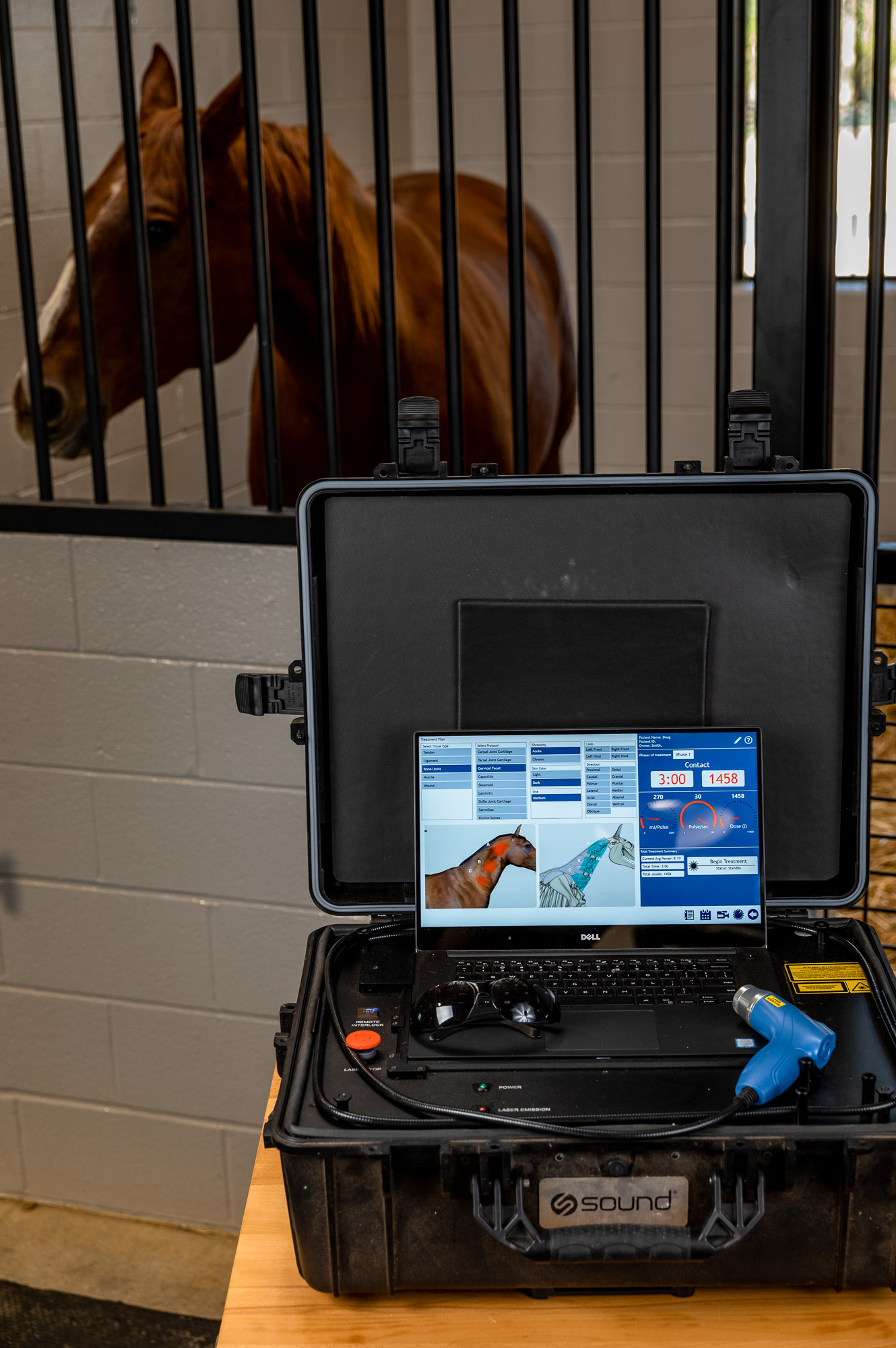Equine Therapy for Injury Healing: Exactly How Equines Assist Heal Emotional Wounds
How Laser Treatment in Horse Treatment Is Transforming Vet Care for Steeds
Laser therapy has arised as a transformative strategy in equine vet treatment, giving a non-invasive solution that accelerates recovery and enhances total health and wellness. The mobility and adaptability of laser treatment devices further underscore their expanding necessity amongst vets.

Comprehending Laser Treatment
Understanding laser therapy is important for valuing its function in equine treatment. Laser treatment, additionally referred to as photobiomodulation, involves the application of particular wavelengths of light to tissues, which can cause different biological results. This therapeutic method uses the power of light power to permeate the skin and underlying cells, promoting mobile procedures and enhancing cells fixing.
The modern technology behind laser treatment is grounded in the concept of photochemistry, where photons are taken in by chromophores within cells, leading to raised ATP manufacturing and modulation of responsive oxygen species. This, subsequently, advertises cellular spreading, decreases inflammation, and increases recovery. Veterinary practitioners utilize various types of lasers, consisting of low-level lasers (LLLT) and high-power Course IV lasers, depending upon the certain healing objectives and the nature of the equine problem being dealt with.
Different laser wavelengths and power setups are very carefully selected to target various cells depths and achieve desired scientific outcomes. Security procedures are critical, as incorrect usage can bring about thermal damage or suboptimal healing impacts. Thus, an extensive understanding of laser therapy's systems and applications is critical for its reliable execution in equine vet practice.
Benefits for Horse Health
The myriad advantages of laser treatment for equine health encompass improved healing, pain reduction, and improved mobility. This sophisticated therapy method leverages specific wavelengths of light to pass through cells, stimulating cellular feature and advertising quick tissue fixing. The non-invasive nature of laser therapy guarantees very little stress and anxiety and pain for the equine, facilitating a smoother recovery process.

By minimizing inflammation and discomfort, and boosting cells fixing, laser treatment aids in restoring joint feature and muscle versatility. Hence, laser treatment stands as a transformative tool in modern-day equine veterinary treatment.
Typical Conditions Treated
Laser therapy has actually arised as a versatile treatment option for a selection of typical equine problems. In addition, laser therapy is effective for problems like osteo arthritis, where it assists mitigate joint inflammation and promote tissue repair.
Wound management is one more area where laser treatment has shown significant pledge. Persistent injuries or slow-healing ulcers can be particularly tough in equines, but laser therapy boosts cellular regrowth and improves blood circulation, thus expediting the healing process. Moreover, laser therapies have actually been efficiently utilized in taking care of unguis conditions such as laminitis and abscesses, easing pain and promoting faster recovery.
Equine professional athletes typically additional reading deal with performance-related concerns like muscle discomfort and tension cracks. Laser therapy help in lowering muscular tissue fatigue and accelerates the recuperation of micro-injuries, hence guaranteeing that steeds go back to come to a head performance quicker. By addressing these diverse conditions, laser treatment is changing the landscape of veterinary treatment, giving a non-invasive, efficient alternative to conventional therapies.
Modern Technology Behind Laser Therapy

Laser gadgets used in vet medicine usually make use of low-level laser therapy (LLLT) or cool laser therapy. Unlike high-powered medical lasers, these gadgets run at reduced power levels, optimizing restorative advantages while decreasing thermal damages. The energy Homepage from the laser light promotes adenosine triphosphate (ATP) manufacturing, enhances mobile metabolic rate, and increases tissue repair processes.
Modern laser treatment devices for equine therapy is created with flexible settings to provide to the details needs of different tissues and conditions. In addition, improvements in laser technology have led to the growth of portable, portable tools, making it simpler for veterinarians to give treatment in a range of settings, from centers to stables.
Success Stories and Study
Showcasing the substantial benefits of laser treatment, numerous success tales and situation research studies brighten its transformative influence on equine health and wellness. One such instance involves a purebred racehorse struggling with chronic tendonitis. Typical therapies generated marginal improvement, but after integrating laser therapy into the routine, the equine showed substantial reductions in inflammation and pain within weeks, inevitably returning to affordable auto racing.
One more engaging instance includes a dressage equine detected with serious back pain, limiting its performance. A veterinary team employed low-level laser therapy (LLLT) to target the swollen areas, resulting in significant enhancement in flexibility and a notable reduction in discomfort. Over numerous sessions, the steed restored its peak type, showcasing the efficiency of laser treatment in dealing with bone and joint concerns.
Furthermore, a research conducted at a leading equine clinic taken a look at 50 equines with different soft cells injuries treated with laser therapy. The results were striking: 85% of the steeds demonstrated accelerated recovery times and improved flexibility. These situations highlight the convenience and efficiency of laser treatment in equine medicine, using a non-invasive, scientifically-backed approach to enhancing recovery and performance in horses.
Conclusion
Laser Bonuses treatment is reinventing equine vet treatment by supplying a non-invasive treatment that speeds up healing, reduces inflammation, and minimizes pain. With its efficiency in dealing with an array of conditions, from bone and joint injuries to persistent disorders like osteoarthritis, this technology substantially improves equine health and mobility. The transportability and adaptability of laser treatment even more highlight its transformative influence on vet methods, solidifying its duty as an important tool in modern-day equine health care.